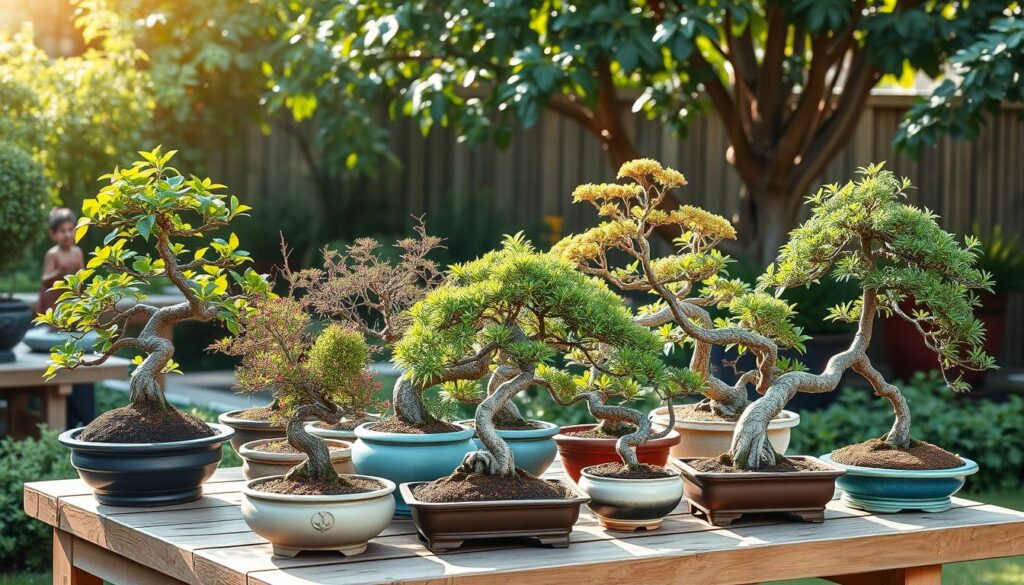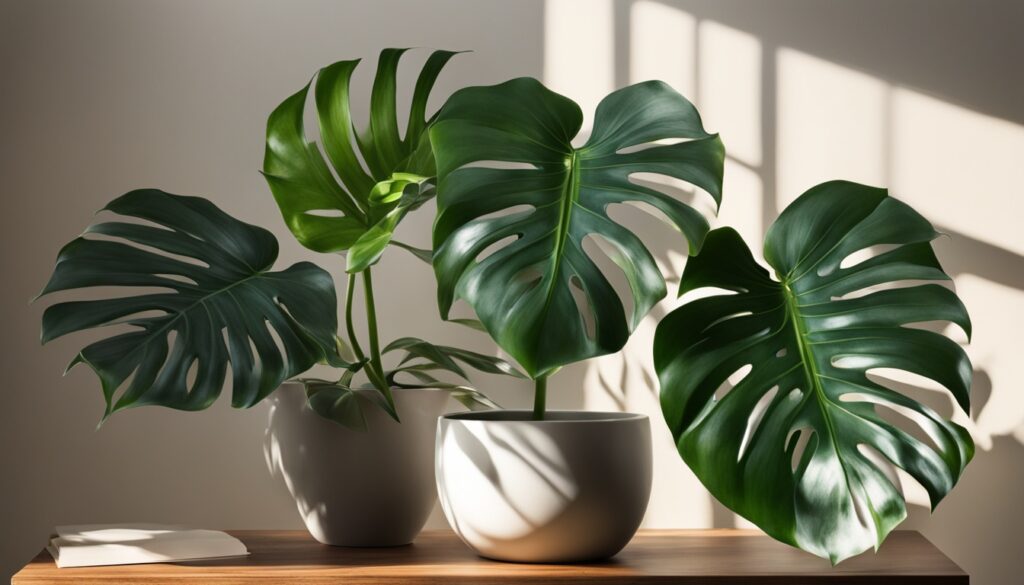Are you ready to start an exciting journey into the world of bonsai? Choosing the right bonsai tree is key for beginners. There are many options, from lush indoor plants to hardy outdoor trees. But, where do you start?
In this guide, we’ll show you the best beginner bonsai trees for newbies. You can pick from indoor beauties or outdoor wonders. Get ready to find species that are not only beautiful but also fit your growing space and taste.
Key Takeaways
- Explore the most beginner-friendly bonsai tree species suitable for indoor and outdoor environments.
- Understand the specific care requirements and growing conditions for each recommended bonsai type.
- Discover the unique characteristics and visual appeal that make these bonsai trees ideal for novice enthusiasts.
- Learn how to select the right bonsai tree to match your personal style, climate, and skill level.
- Gain the confidence to start your bonsai journey with the best-suited species for your needs.
Understanding Indoor vs Outdoor Bonsai Basics
Choosing between indoor and outdoor bonsai is key. Indoor bonsai trees need tropical or sub-tropical species. They thrive in stable temperatures, low light, and high humidity. On the other hand, temperate trees like junipers and Chinese elms do well outdoors. They need seasonal changes and temperature swings for growth.
Climate Requirements for Different Species
Every bonsai species has its own climate needs. Indoor bonsai like Ficus and Jade love warm, humid places with steady temperatures. Outdoor bonsai such as Juniper and Chinese elm are tougher. They handle temperature changes and the outdoors better.
Light and Temperature Considerations
Lighting and temperature control are vital for bonsai trees. Indoor bonsai need bright, direct light. Outdoor bonsai can handle partial shade or full sun, depending on the type. Keeping temperatures stable is also key. Indoor bonsai prefer warm, steady conditions. Outdoor bonsai benefit from natural temperature swings.
Humidity and Watering Needs
Right humidity and watering are crucial for bonsai health. Indoor bonsai need more water and higher humidity. Outdoor bonsai get enough water from natural rainfall and air movement.
| Indoor Bonsai | Outdoor Bonsai |
|---|---|
| Tropical or sub-tropical species | Temperate tree species |
| Stable temperatures, low light, high humidity | Seasonal temperature changes, full sun or partial shade |
| Frequent watering, humidity trays | Less frequent watering, benefit from natural rainfall |
Knowing the needs of indoor bonsai trees and outdoor bonsai is vital. By picking the right species and conditions, you can grow thriving bonsai. They add beauty and joy to any space.
The Best Beginner Bonsai Tree: Essential Selection Guide
Choosing a beginner bonsai involves several factors. These include your location, personal taste, and budget. For indoor bonsai, the Ficus retusa and Portulacaria afra (Dwarf jade) are top picks. They are tough and easy to care for. Outdoor lovers might prefer Juniper or Chinese elm.
The Chinese Elm is great for both indoor and outdoor spaces. It’s perfect for beginners looking into bonsai care guide and bonsai for beginners. Each bonsai type needs special care, so do your homework before picking one.
- Ficus retusa: A popular indoor bonsai choice known for its resilience and adaptability.
- Portulacaria afra (Dwarf jade): A low-maintenance indoor bonsai option with drought-tolerant features.
- Juniper: An outdoor bonsai favorite for its scale-like foliage and wild appearance.
- Chinese elm: A versatile choice suitable for both indoor and outdoor environments, making it an excellent bonsai for beginners.
“Nearly all enthusiasts who cultivate bonsai trees as a hobby prefer to grow them outdoors.”
Think about the special care each bonsai needs when picking one for a beginner. With the right research and dedication, anyone can start their bonsai journey.
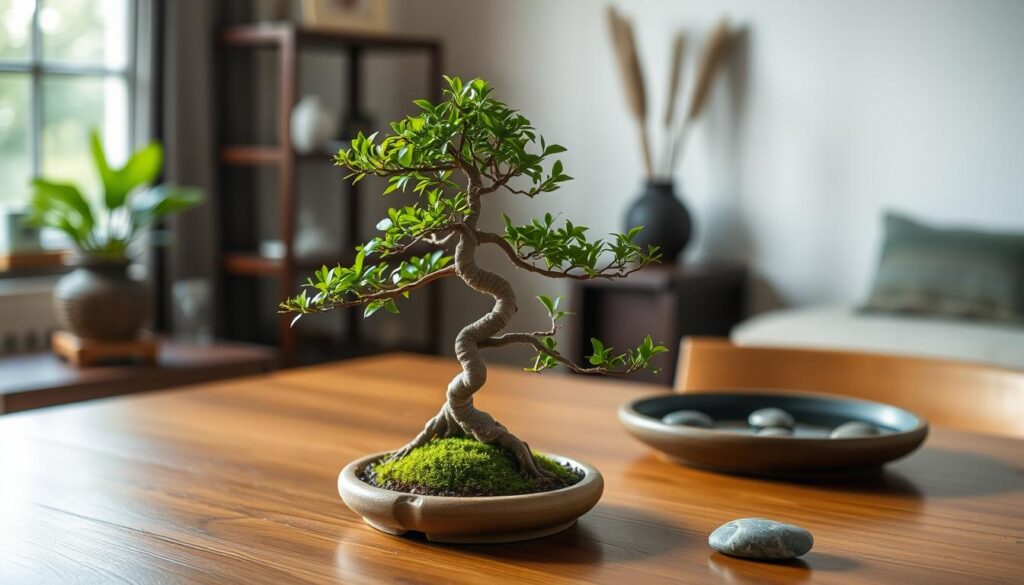
Chinese Elm: The Perfect Starter Bonsai
The Chinese Elm (Ulmus parvifolia) is great for beginners. This 12-year-old bonsai is easy to care for. It has small, bright green leaves and looks like a tiny woodland tree.
Growing Characteristics
The Chinese Elm bonsai grows up to 50 feet tall. Its leaves are 3/4 to 2 inches long. It grows fast, with branches up to six feet long in a season.
Care Requirements
This bonsai is easy to maintain. It has a twisted shape and looks refined. Regular pruning makes it look even better, and it stays green all year.
Indoor and Outdoor Versatility
The Chinese Elm bonsai is versatile. It does well indoors and outdoors. It’s frost-hardy, making it perfect for different environments. It’s a great choice for beginners who want a low-maintenance bonsai.
“The Chinese Elm bonsai is an excellent choice for beginner bonsai enthusiasts, with its adaptability, pleasing aesthetics, and straightforward care requirements.”
Herons Bonsai in the UK offers classes on growing Chinese Elm and other bonsai varieties. They provide hands-on learning. You can ask about prices and schedules for these workshops.
Ficus Retusa: Most Popular Indoor Choice
The Ficus retusa is the top pick among indoor bonsai trees. It’s loved for its beautiful leaves, fine branches, and easy fit into indoor spaces. It even grows aerial roots, adding to its beauty as an indoor bonsai plant.
For the best growth, put the Ficus retusa in a bright spot. It needs a few hours of direct sunlight each day. Make sure to water it when the soil starts to dry out. This makes it a great easy bonsai plant for beginners.
“The Ficus bonsai tree is the most popular bonsai for beginners.”
There are many Ficus varieties, like Microcarpa, Tigerbark, Willow Leaf, and Ginseng. Each has its own look and growth style. These plants, from South-eastern Asia, are perfect for indoor bonsai fans.
| Ficus Bonsai Variety | Distinctive Features |
|---|---|
| Ficus Retusa | Glossy, waxy leaves; fine ramification |
| Ficus Microcarpa | Small, dense leaves; compact growth |
| Ficus Tigerbark | Distinctive, textured bark; twisted trunk |
| Ficus Ginseng | Thick, pot-bellied trunk; resembles ginseng root |
Whether you’re new or experienced with indoor bonsai, the Ficus retusa and its varieties are a joy. With the right care, these trees can flourish indoors. They bring a piece of nature and beauty to any room.
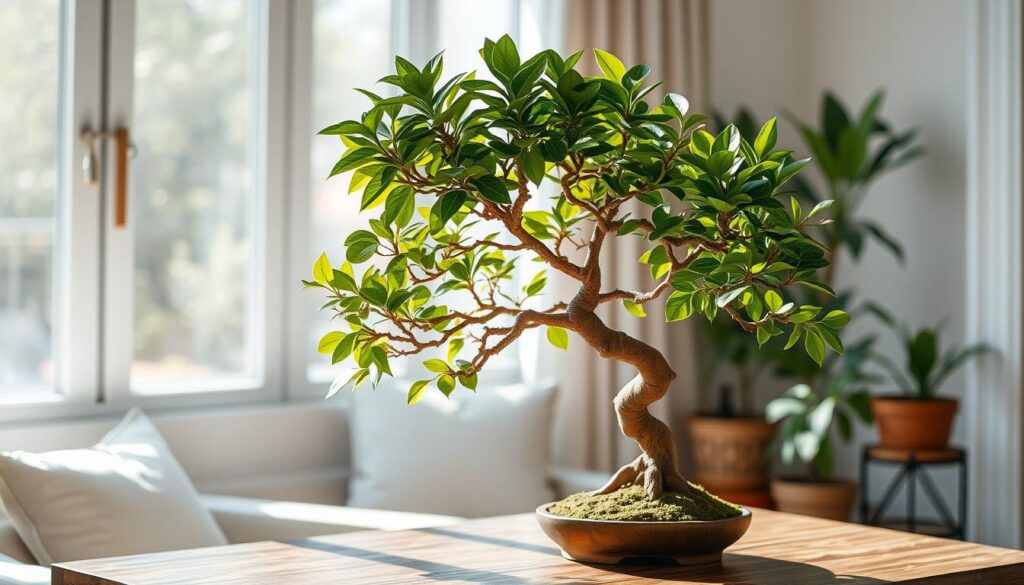
Dwarf Jade: Low-Maintenance Champion
The Dwarf Jade (Portulacaria afra) is perfect for beginners. It’s a succulent from South Africa known for its drought tolerance. This makes it great for those new to bonsai.
Drought Tolerance Features
The Dwarf Jade can store water in its leaves. This helps it survive when water is scarce. It’s a big help for beginners who might forget to water sometimes.
Light Requirements
The Dwarf Jade loves lots of sunlight. It needs several hours of direct sun each day. Placing it near a sunny window is best for its health.
| Characteristic | Description |
|---|---|
| Climate Suitability | Well-suited for indoor or outdoor environments, thriving in warm, dry conditions |
| Watering Needs | Infrequent watering, allowing the soil to partially dry out between waterings |
| Growth Habit | Compact, with small, oval-shaped leaves and a slow-growing, trailing nature |
| Aesthetic Appeal | Appealing, cascading form and rich, green foliage that complements bonsai design |
The Dwarf Jade is perfect for beginners. It’s easy to care for and very forgiving. It’s a great choice for those new to bonsai.
“The Dwarf Jade’s compact size, drought tolerance, and ease of care make it a true standout among low-maintenance bonsai options for novice growers.”
Juniper Bonsai: Outdoor Enthusiast’s Favorite
Juniper (Juniperus) is the top pick for outdoor bonsai trees. With over 70 types, they’re perfect for outdoor bonsai trees and bonsai starter kits. They’re tough, easy to find, and affordable, great for newbies.
Junipers have fine, green leaves that look like a small, real tree. They can grow beautiful deadwood with the right care. But, they need to be outside and can’t live indoors. They do well in many climates but might need extra care in very cold places.
Popular juniper types for bonsai include Juniperus Procumbens Nana and Juniperus Squamata. Each has its own look, like the bright blue-green of Blue Star Juniper. With regular care, these bonsai can be beautiful and easy to keep up with outdoors.
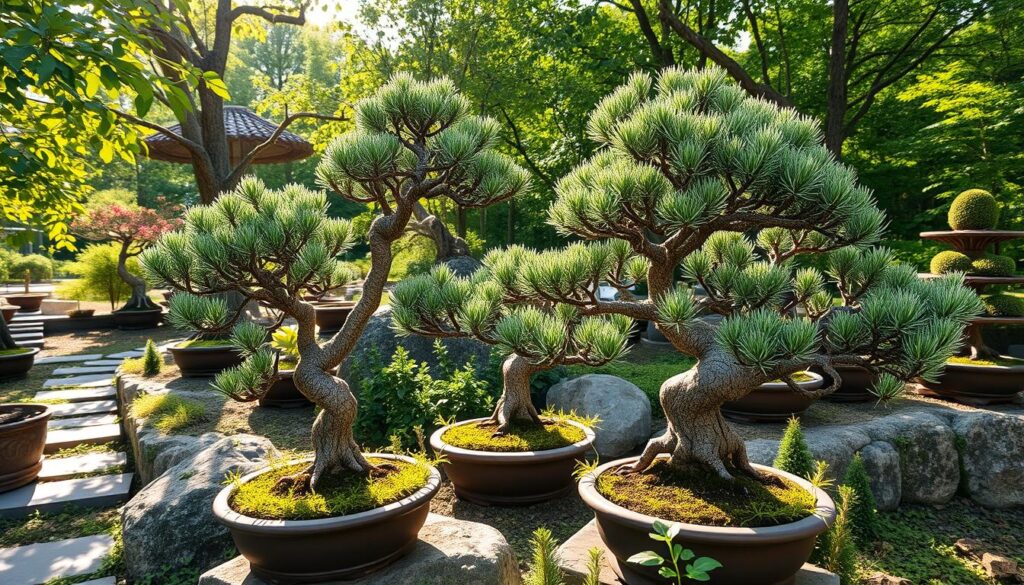
“Junipers are a fantastic choice for beginner bonsai growers, offering a robust and versatile foundation to explore the art of miniature tree cultivation.”
Juniper bonsai are perfect for both new and experienced outdoor lovers. They’re a great choice for anyone starting with a bonsai starter kit. They bring the outdoors to your home with little effort.
Essential Tools and Supplies for Beginners
Starting your bonsai journey means getting the right tools and supplies. A bonsai starter kit is key for beginners. It includes everything from pruning shears to the best bonsai soil. Each tool is important for your bonsai’s health and growth.
Basic Tool Kit Components
A bonsai starter kit should have these essential tools:
- High-quality pruning shears for precise branch and twig trimming
- Wire cutters to facilitate branch wiring and shaping
- Tweezers for meticulously handling delicate leaves and roots
- Root hooks and rakes for maintaining a healthy root system
- Specialty knives and carving tools for deadwood and styling work
Soil and Pot Selection
Choosing the right bonsai soil is vital for your trees. A mix of akadama, pumice, and lava rock is best. Also, pick the right pot size and style for your tree’s growth and looks. Shallow pots with good drainage are traditional choices.
| Tool | Recommended Size | Average Price |
|---|---|---|
| Concave Branch Cutters | 180mm | £20.00 |
| Knob Cutters | 180mm | £20.00 |
| Root Cutters | 210mm / 270mm | £15.00 |
| Bonsai Scissors | – | – |
| Branch Cutters | – | £20.00 |
| Wire Cutters | – | £20.00 |
| Root Rake & Spatula | 250mm | £15.00 |
| Root Rake & Tweezers | 210mm | £15.00 |
| Chinese Basic Tool Kit | – | £85.00 |
Choosing the right tools and bonsai soil is key. It sets you up for a rewarding bonsai journey and creating beautiful miniatures.
Watering Techniques for Novice Bonsai Growers
Proper watering is key for your bonsai trees to stay healthy and live long. As a new bonsai fan, knowing how to water right is vital. Here are some tips to help you get better at watering your bonsai:
- Check your bonsai trees twice a day, both morning and evening, to see if they need water.
- Water them well when the soil feels dry to the touch, making sure the water drains out.
- Stay away from too much or too little water, as both can harm your bonsai.
- For indoor bonsai, use a humidity tray to keep the air moist around the tree.
- In hot weather, soak the whole pot in water for about ten minutes to rehydrate the soil if it’s too dry.
The amount of water your bonsai needs changes with the season, location, and type of tree. Adjust your watering schedule to meet each tree’s unique needs.
“The second most common cause of bonsai-related problems is attributed to watering techniques where underwatering or permitting the compost to dry out completely can lead to instant tree damage or death.”
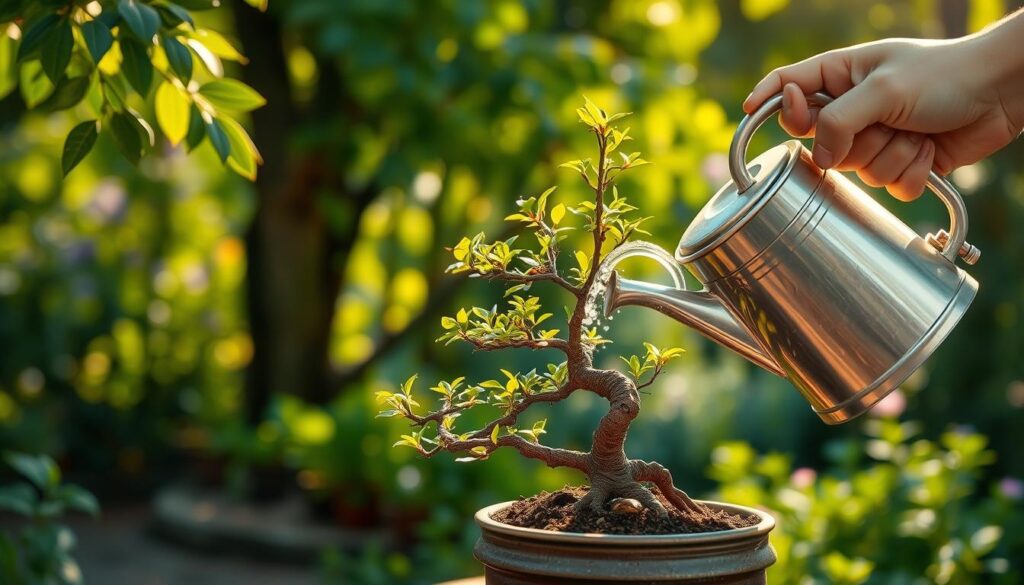
By following these tips, you’ll become more confident and skilled in growing bonsai. Learning to water your bonsai well is a big step in caring for your trees and watching them thrive for years.
Pruning and Shaping Fundamentals
Maintaining the shape and health of bonsai trees is key. Regular pruning is essential for this. It encourages dense growth and keeps the tree in shape.
For deciduous trees, prune in early spring before new growth starts. Conifers can be pruned all year, but avoid very hot or cold periods.
Basic Pruning Methods
There are several pruning techniques beginners should learn. Thinning cuts remove excess branches and foliage. Heading cuts control the tree’s height and shape.
Pine trees and conifers often use pinching. This involves using fingers to remove new growth, preventing unwanted branches.
Wiring Techniques
Wiring is vital for shaping bonsai trees. It bends and twists branches and trunks. Wrap wire at a 45-degree angle for a spiral pattern.
Don’t wire too tightly to avoid damaging the tree. Remove the wire before it cuts into the bark as the branch thickens.
| Pruning Recommendations | Wiring Considerations |
|---|---|
|
|
Mastering pruning and wiring lets bonsai enthusiasts create stunning mini bonsai trees. These living masterpieces show the beauty of nature in a small form.
Common Beginner Mistakes to Avoid
Starting your bonsai journey can be both exciting and tough, especially for beginners. To have a good experience, it’s key to avoid common mistakes. These include overwatering and improper pruning, which can harm your trees.
One big mistake is overwatering. Bonsai trees need the right amount of water, whether indoors or outdoors. Too much water can cause root rot. Not enough water can make leaves dry and trees weak.
Another common problem is not enough light. A bonsai care guide stresses the need for the right light. Indoor bonsai need light, not dark corners or heat sources.
- Avoid drastic pruning without proper knowledge, as it can harm the tree’s health and appearance.
- Refrain from over-fertilizing, which can damage the roots and stunt the growth of your bonsai.
- Don’t neglect pest control or ignore signs of disease, as these issues can quickly escalate and compromise the well-being of your bonsai.
Patience and consistent care are key in bonsai. Don’t rush to change your bonsai’s look or routine. Enjoy the slow growth of this art. By avoiding these mistakes, you’ll grow strong, long-lived bonsai trees.
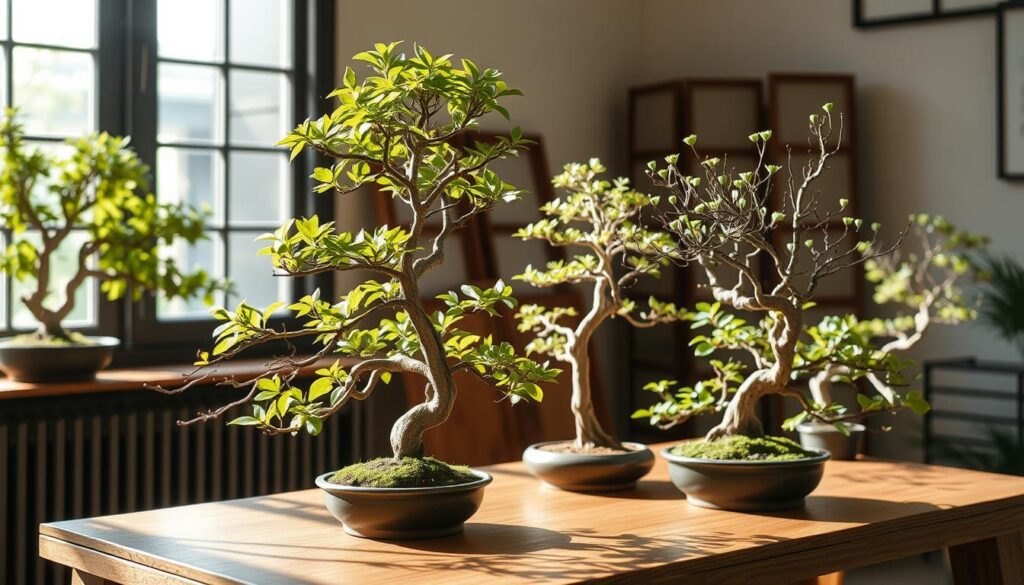
Seasonal Care Guidelines
Keeping your bonsai trees healthy all year round is key. Whether they’re outside or inside, knowing their seasonal needs is important. This helps them stay vibrant and strong.
Winter Protection
When it gets cold, outdoor bonsai trees need extra care. Move them to a warm spot, like a greenhouse or a covered patio. If that’s not doable, use frost protection fabric or other materials to keep them safe.
Even though they’re dormant, don’t let the soil dry out. Water them less often, but not so little that they suffer.
Summer Maintenance
Summer brings its own set of challenges for bonsai care. Water them more often to keep the soil moist. But, don’t overdo it.
Also, move them to a spot with some shade during the hottest times. This helps prevent stress from too much sun. Indoor bonsai need regular misting to keep the air humid.
Change how often you fertilize based on the season. Stop or reduce fertilizing in winter. Then, increase it in spring and summer. This gives your bonsai the nutrients they need to grow well.
Knowing how to care for your bonsai trees seasonally is crucial. It ensures they stay healthy and beautiful all year. Follow these guidelines to give your indoor and outdoor bonsai the best care.
Fertilization and Nutrition Basics
Keeping your bonsai trees healthy means giving them the right food. Since they have small amounts of soil, they need regular feeding. Knowing how to feed your bonsai is key to its growth.
The main parts of any fertilizer are Nitrogen (N), Phosphorus (P), and Potassium (K). For bonsai care guide, use a balanced, water-soluble fertilizer made for bonsai. Feed your bonsai every two weeks from spring to early autumn. In winter, don’t feed it to avoid too much growth.
If your bonsai is meant to bloom or bear fruit, use a fertilizer with more phosphorus (P) when buds start to form. This helps with flowers and fruit. Make sure to water your bonsai before adding fertilizer to prevent damage.
Organic bonsai soil fertilizers are softer on your bonsai. But, you might need to feed it more often. Biogold, a Japanese organic fertilizer with an NPK ratio of 6:7:4, is a good choice.
- Use a balanced, water-soluble fertilizer formulated for bonsai
- Apply fertilizer every two weeks during the growing season (spring to early autumn)
- Reduce or stop fertilizing during the winter dormancy period
- Switch to a higher phosphorus (P) fertilizer for flowering or fruiting bonsai species
- Always water the tree before applying fertilizer to prevent root burn
- Organic fertilizers can be a gentler alternative but may require more frequent application
Right fertilization and care are vital for your bonsai’s health. By following these tips, your bonsai will get the nutrients it needs to flourish.
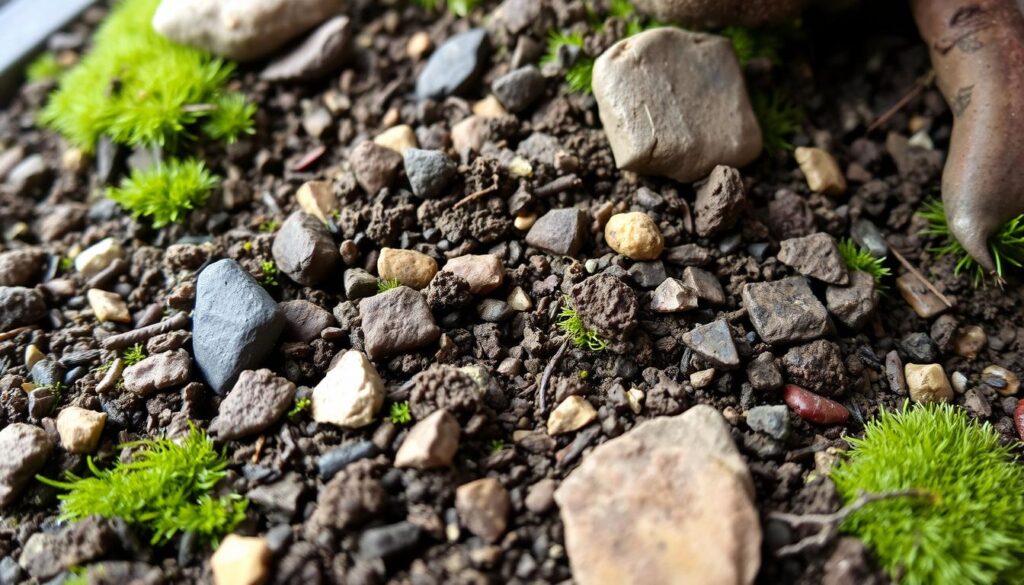
Location and Placement Strategies
Choosing the right spot is key for both indoor bonsai trees and outdoor bonsai trees. For indoor bonsai, place them near south-facing windows for lots of sunlight. Stay away from radiators, air conditioners, and drafty spots, as they can harm their growth.
For indoor bonsai that don’t get enough natural light, grow lights can help. Outdoor bonsai trees need a spot that matches their light needs. Most prefer full sun to partial shade, so pick a spot with the right amount of sunlight.
Indoor Positioning Tips
- Put indoor bonsai trees near south-facing windows for the best light.
- Don’t place them near heat sources, air conditioning units, or drafty spots.
- Use grow lights if natural light is not enough for your indoor bonsai trees.
Outdoor Placement Guidelines
- Put outdoor bonsai trees in a spot that matches their light needs, usually full sun to partial shade.
- Keep your outdoor bonsai trees safe from strong winds and extreme temperatures.
- In hot weather, move your outdoor bonsai trees to a shadier area to avoid stress.
- In winter, put cold-sensitive outdoor bonsai tree species in a sheltered area or cold frame to protect them from frost.
By thinking carefully about where to place your indoor bonsai trees and outdoor bonsai trees, you can help them grow well and reach their best.
Repotting Your First Bonsai
Repotting is key to keeping your bonsai healthy and strong. Young bonsai need repotting every 1-2 years. Mature trees should be repotted every 2-5 years, usually in early spring.
Choose a good bonsai soil mix for repotting. Gently take out the bonsai and trim about 1/3 of the roots. This helps the roots grow stronger and more compact. Then, put the bonsai in the new soil, making sure it’s in the right spot.
Water the bonsai well after repotting. This helps the soil settle and encourages root growth. For a few weeks, don’t fertilize too much and avoid heavy pruning. This lets the bonsai recover and settle into its new home.
Repotting needs patience and care. Learning this skill helps your bonsai grow strong and healthy for many years.
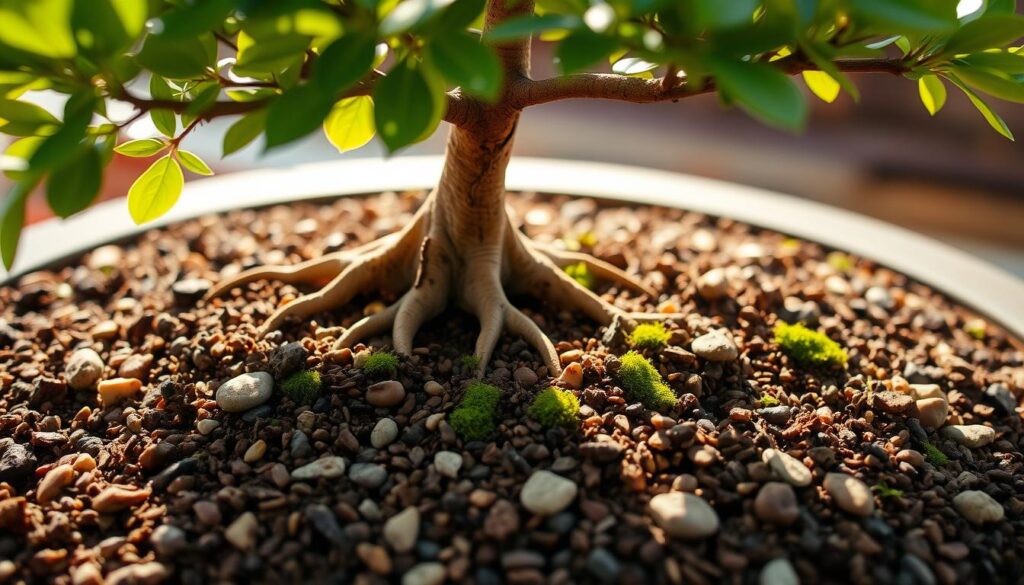
“Repotting is the single most important and significant technique in the successful cultivation of bonsai trees.”
The roots of a bonsai are like a car’s engine. They drive the tree’s growth and health. Good repotting practices help the roots grow well and avoid problems like too much root growth and poor soil aeration.
By following repotting tips and using quality bonsai soil, your bonsai will thrive. It will become a beautiful part of your home or garden.
Disease Prevention and Treatment
Keeping a bonsai healthy means watching out for diseases and pests. By being proactive, bonsai lovers can keep their trees healthy for a long time. Over the last 30 years, Bonsai Direct has grown and sold hundreds of thousands of bonsai trees. They’ve done this without losing a single tree to bugs, thanks to their effective prevention methods.
Proper watering is key to preventing disease. Too much water can cause root rot, a big problem for bonsai trees. It’s also important to make sure the tree gets good air and to check for pests or infections often.
If a disease or pest shows up, act fast. Problems like fungal infections and bugs like aphids and spider mites can happen. To fix root rot, improve drainage and water less. Use fungicides and insecticides carefully, choosing the least harmful options first.
Using Biological Control to fight pests has been around for over 100 years. It uses living things like insects to control pests, reducing the need for harsh chemicals. This fits with the green practices that many bonsai fans and businesses, like Bonsai Direct, follow.
| Bonsai Bug | Description | Treatment |
|---|---|---|
| Aphids | Small, pear-shaped insects that cluster on new growth and suck plant juices | Use a soft brush or cloth to remove them, or apply an insecticidal soap |
| Whiteflies | Small, white, moth-like insects that feed on plant sap | Spray with an insecticidal soap or neem oil |
| Caterpillars | Larvae of various moth and butterfly species that can defoliate bonsai | Hand-pick and remove them, or use a natural pesticide like Bacillus thuringiensis |
Quarantining new or sick trees is also crucial to prevent the spread of diseases or pests to healthy bonsai in your collection. By staying vigilant and taking proactive measures, bonsai enthusiasts can maintain the beauty and vitality of their beloved trees for years to come.
Conclusion
Choosing the right bonsai tree for beginners depends on several factors. These include personal taste, living conditions, and how much time you can dedicate. Popular options include Chinese Elm, Ficus, and Juniper. Each has its own benefits.
Success in growing bonsai trees starts with knowing the basics. You need to pick the right species and stick to a care routine. This ensures your tree grows well.
Starting with a bonsai tree can be very rewarding. It combines nature and art in your home or garden. Whether you like the easy Dwarf Jade, the classic Juniper, or the versatile Chinese Elm, there’s a tree for you.
Learning about the needs of different bonsai species is key. This helps your tree flourish and adds peace to your space. With the right care and patience, growing a bonsai can be a fulfilling hobby.
